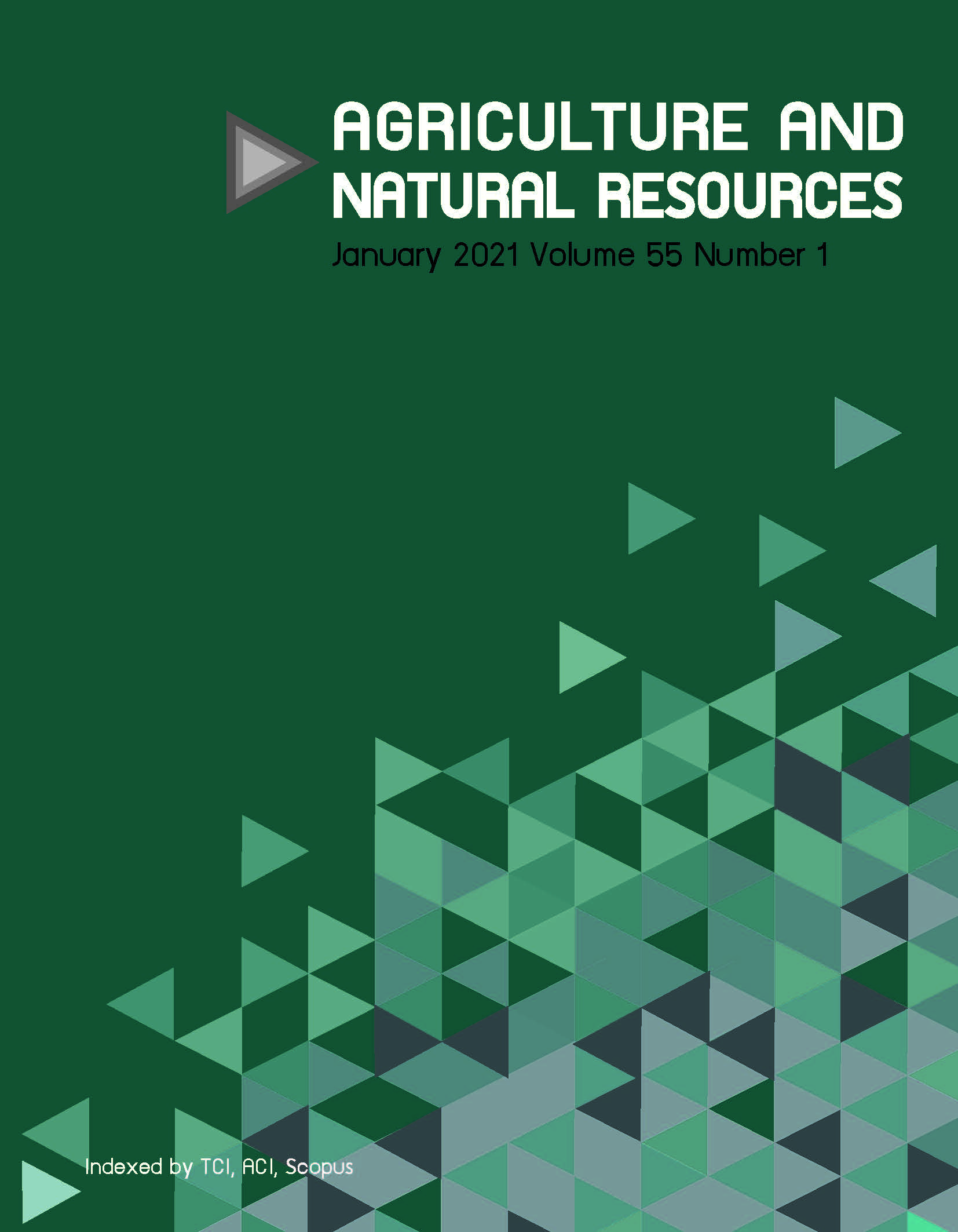Genetic diversity of ‘Bangle’ (Zingiber montanum (J.Koenig) Link ex A.Dietr.) inferred from sequence-related amplified polymorphism markers
Keywords:
DNA profiling, Genetic diversity, Indonesia, ZingiberaceaeAbstract
Zingiber montanum (J.Koenig) Link ex A.Dietr. known in Indonesia as ‘Bangle’ is widely cultivated there in addition to other Zingiber species, such as Z. officinale Roscoe and Z. zerumbet (L.) Sm. Despite the rich properties of its rhizomes as an anti-oxidant and anti-inflammatory, knowledge of its genetic diversity is still scarce. Understanding genetic diversity is important for conservation purposes and to improve the genetic contents. Consequently, genetic diversity of Z. montanum was analyzed using sequence-related amplified polymorphism (SRAP) markers. In total, 54 Z. montanum samples collected from 12 regions in four provinces were analyzed using eight SRAP primer pairs which amplified the open reading frames region. The results showed that Z. montanum had high genetic diversity with mean (± SD) values for Nei’s genetic diversity and the Shannon information index of 0.257 ± 0.172 and 0.400 ± 0.223. Even though Z. montanum is a clonal species, it was able to maintain high genetic diversity. The analysis of molecular variance showed that the genetic variation occurred mostly within the population. High genetic diversity and low differentiation among populations could suggest that rare sexual reproduction has played an important role in Z. montanum population history. Bayesian model-based clustering was congruent with the unweighted pair-group method of averages dendrogram at the sub-cluster level. The Z. montanum populations were grouped into three clusters with strong correlation within geographic locations. Based on the results, germplasm should be collected and maintained for at least one individual from each of the three clusters.
Downloads
Published
How to Cite
Issue
Section
License

This work is licensed under a Creative Commons Attribution-NonCommercial-NoDerivatives 4.0 International License.
online 2452-316X print 2468-1458/Copyright © 2022. This is an open access article under the CC BY-NC-ND license (http://creativecommons.org/licenses/by-nc-nd/4.0/),
production and hosting by Kasetsart University of Research and Development Institute on behalf of Kasetsart University.







